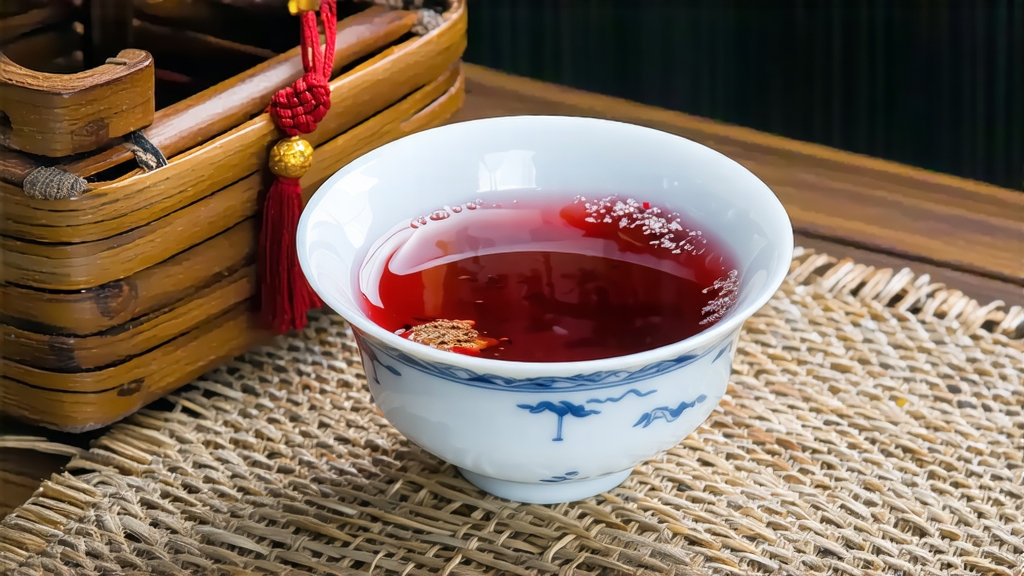
Long before Assam, Ceylon, or Earl Grey entered the global lexicon, the cliffs of northern Fujian were already exhaling the scent of smouldering pine. Lapsang Souchong—today a niche curiosity in the West—was the first black tea ever created, the primogenitor of a beverage family that now stretches from Kolkata to Cornwall. Its Chinese name, Zheng Shan Xiao Zhong, literally “Small-leaf Kind from the Original Mountain,” quietly insists on terroir: only leaves plucked within the 60 km² core of the Wuyi UNESCO geopark may bear the title. Everything else is merely an echo.
History: from Ming-era accident to London drawing rooms
Legend places the birth moment in 1568, when a passing army requisitioned tea curing sheds at Tongmu village. To dry the leaves before the troops returned, anxious farmers spread them over fresh pine fires. The resulting liquor—brisk, resinous, improbably sweet—reached the port of Xiamen, sailed with Dutch merchants to Amsterdam, and by 1604 appeared in London coffee-houses as “bohea,” a corruption of “Wuyi.” When Catherine of Braganza brought her tea habit to Charles II’s court, the pine-smoked leaf became the taste of Restoration chic. By the late Qing, annual exports topped 10 000 tons; even the cuttings that founded the Indian tea industry were botanically labelled “Bohea variety.” Thus every modern black tea is, genetically and historically, a grand-child of Lapsang Souchong.
Micro-terroir: why the canyon mist matters
The Wuyi massif is a shattered sandstone escarpment sliced by the Chongyang and Tongmu streams. Morning fog lingers until noon, filtering sunlight to a soft amber and forcing the tea bush to synthesize extra L-theanine and volatile sugars. Mean annual humidity hovers at 85 %; night temperatures drop 10 °C, locking floral terpenes inside the tender one-leaf-and-a-bud pluck. The soil is a gritty, mineral-rich laterite—so porous that walking uphill sounds like treading on cornflakes. These stresses create the cultivar’s signature “rock rhyme” (yan yun), a lingering coolness that arrives minutes after you swallow.
Two families: smoked and unsmoked
Purists divide Lapsang Souchong into two legal identities. Traditional Song Zhong is withered over resinous Masson pine, then pan-fired in cast-iron woks, rolled by hand on bamboo trays, and finally smoked inside second-floor lofts whose ceiling beams are carpeted with fresh pine needles. The slower the smoke, the subtler the aroma; top lots receive only cool, aromatic draughts for up to 48 h. In 2005 Tongmu masters, responding to Western health concerns about polycyclic aromatics, developed Wu Xun—an unsmoked “new-style” that relies solely on withering, oxidation and charcoal baking. Wu Xun steeps a clear crimson liquor tasting of longan and honey, while Song Zhong layers that sweetness with sandalwood, camphor and a whisper of bacon fat. Both share the same cultivar—Wuyi Caicha, a compact-leaf landrace whose serrated blades resemble miniature shark fins.
Craft: the invisible choreography of smoke
Visiting Tongmu during April harvest feels like stepping into a Baroque still-life. In the withering loft, bamboo mats the size of pool tables are draped with 4 cm of just-picked leaf. A charcoal brazier glows below, but no flame ever touches the tea; instead, pine logs smoulder inside a brick chamber whose only exit is a bamboo flue angled toward the tea. Masters gauge readiness by ear: when the rustle of leaf sounds like satin sliding over marble, it is time to roll. Oxidation proceeds inside linen-lined baskets rocked every 15 min; the leaf must blush to a copper penny before smoke is re-introduced. The final bake, done over embers of local hardwood, fixes the colour at Maranello-red and lowers moisture to 3 %—low enough to survive a six-month clipper voyage around the Cape.
Grades: decoding the imperial alphabet
Western vendors often label anything black and smoky as “Lapsang,” yet the Chinese market recognises four ascending grades. Third-grade Pian Z